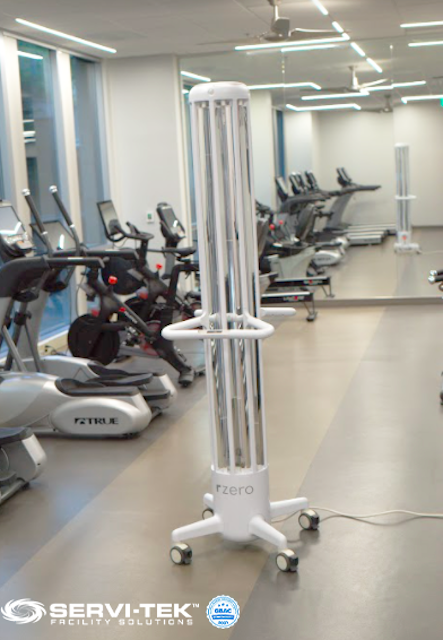How to Improve Indoor Air Quality in Commercial Buildings?
In a post-Covid world, as businesses encourage employees to return to the physical workplace, it’s vital to focus on maintaining a clean and infection-free indoor environment. Indoor Air Quality (IAQ) is a critical factor impacting the health and safety of the building occupants.
Indoor Air Pollutant Sources
Chemical, as well as biological pollutants in commercial building indoor environments, can create health hazards for employees and visitors. Exposure to carbon monoxide, volatile organic compounds (VOCs), animal dander, harmful viruses and bacteria, mold, mycotoxins, dust mites, and pollen may contribute to serious infections and respiratory illnesses over time.
Key Steps to Improve IAQ in Commercial Buildings
Building owners, facility managers, and employers must undertake the following basic steps to ensure safe and healthy indoor air quality for the occupants:
- Improve the building’s natural as well as mechanical ventilation systems for cleaner indoor air
- Keep the flooring, carpets, furniture, and fixtures clean and dust-free
- Regularly inspect and clean the air ducts to eliminate dust, bacteria, mold, and dander
- Change the building’s HVAC air filters periodically and minimize air leakage or infiltration
- Maintain the indoor air humidity at appropriate levels to prevent the occurrence of mold
- Choose eco-friendly cleaning products that won’t release harmful toxins and chemicals into the indoor air
- Use advanced surface disinfection methods to minimize transmission risks of harmful pathogens

When to Replace Air Filters?
Air filters are designed to catch and collect various pollutants and unwanted particulates so that only clean air circulates through the building’s HVAC system. Experienced facility maintenance and engineering professionals can assess the indoor air quality requirements of the building and recommend a custom maintenance schedule, which includes a periodic change of filters. In general, air filters in indoor commercial buildings should be replaced three to four times a year.
UV-C Light for Cleaner HVAC Airflow
HVAC coils and other components in the air conditioning unit may develop fungi, mold, and other harmful micro-organisms over time. A UV-C light device fitted into the air duct system of the HVAC can serve as a useful protective shield to fight the risk of a variety of disease-causing airborne pathogens. The UV-C light also helps in preventing the clogging of the coils, enabling cleaner, and increased airflow.
UV-C light-based air purifiers may also be helpful in certain areas where the ventilation and airflow is inadequate or where there is a larger concentration of people. The UV-C lamp works by attacking the genetic material of the unicellular microbes, rendering them inactive. This disinfection technique works well to improve air quality as well as water and surfaces in offices and other commercial and industrial workspaces.
Indoor Air Purification with Bipolar Ionization
To meet the highest standards of indoor air quality that many employers now want for their buildings, facility maintenance experts are deploying cutting-edge technologies, such as bipolar ionization. A bipolar ionization air purification system generates a strong concentration of positive/negative ions, which are passed through the AC duct network in the building.
These ions fuse with the stubborn particulate matter and micro-organisms, including infectious viruses and bacteria, to inactive their harmful DNA core. Ions are also distributed through the building’s ventilation systems so that they can get fused to the invisible particles and pathogens in the air stream.
As the fusion causes them to become larger in size, the filtration system can effectively prevent them from mixing into the indoor air environment. This innovative bipolar ionization air purification technology also disintegrates odor-causing compounds to enable a clean, fresh-smelling indoor air in closed spaces. Since this is a relatively new technology on the market, there are many skeptics about it, so make sure to document your choices, as it is yet to be proven 100% effective.
Final Word
A strategic facility maintenance plan that prioritizes the improvement of indoor air quality is vital to the safety of employees, customers, and other building visitors. It is also a clear demonstration of the building owner or employer’s commitment to put people’s safety first. To reassure workers and successfully reopen physical workspaces, a focus on the indoor air environment is a key element in promoting health and comfort in commercial buildings.


Poor indoor air quality?. The ionic paint additive, permanently Eliminates, Airborne Pathogens, Smoking odors, Pet urine odors, without using electricity, fans, or filters, check it out.